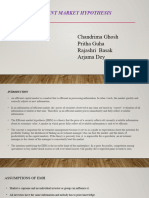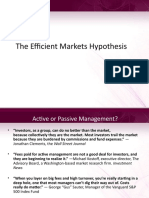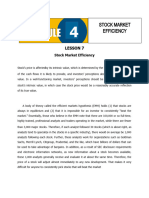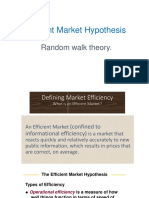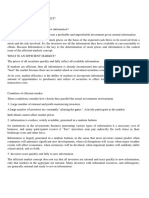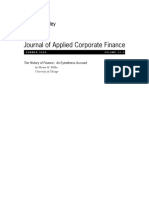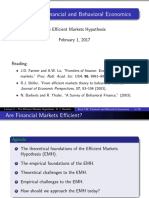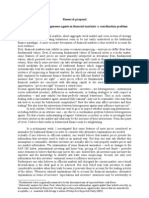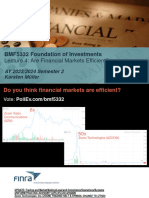0% found this document useful (0 votes)
7 views29 pagesEfficient Markets Hypothesis
The document outlines the Efficient Market Theory (EMT), which posits that stock prices fully reflect available information across three forms: weak, semi-strong, and strong. It discusses the implications of EMT for corporate finance, emphasizing that firms cannot profit from fooling investors in efficient markets and that financial managers cannot time stock and bond sales. The document also presents evidence supporting the first two forms of EMT while noting the existence of contrary views and misconceptions.
Uploaded by
shrutikadavidCopyright
© © All Rights Reserved
We take content rights seriously. If you suspect this is your content, claim it here.
Available Formats
Download as PPT, PDF, TXT or read online on Scribd
0% found this document useful (0 votes)
7 views29 pagesEfficient Markets Hypothesis
The document outlines the Efficient Market Theory (EMT), which posits that stock prices fully reflect available information across three forms: weak, semi-strong, and strong. It discusses the implications of EMT for corporate finance, emphasizing that firms cannot profit from fooling investors in efficient markets and that financial managers cannot time stock and bond sales. The document also presents evidence supporting the first two forms of EMT while noting the existence of contrary views and misconceptions.
Uploaded by
shrutikadavidCopyright
© © All Rights Reserved
We take content rights seriously. If you suspect this is your content, claim it here.
Available Formats
Download as PPT, PDF, TXT or read online on Scribd
/ 29





